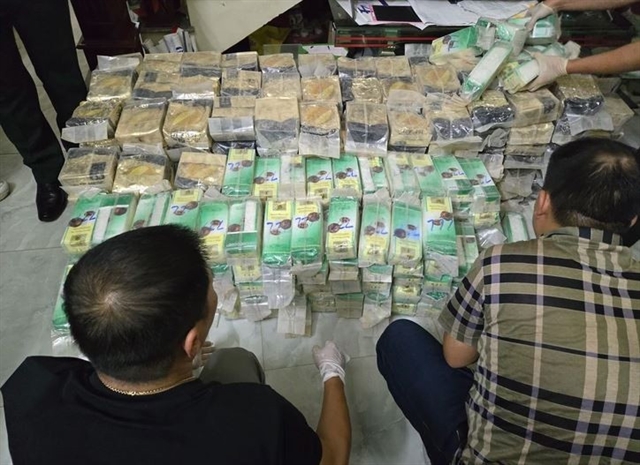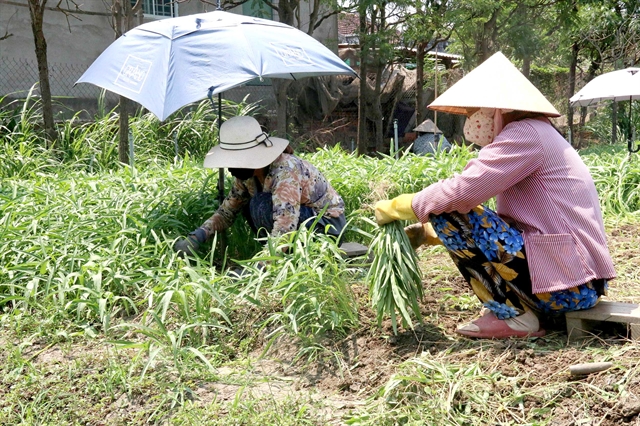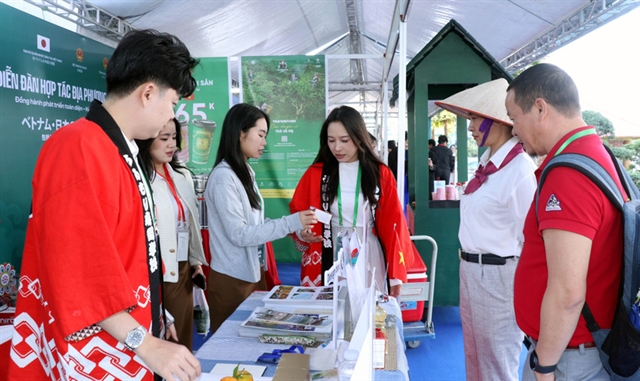 Society
Society

Vegetable cultivation in the Cửu Long (Mekong) Delta province of Tiền Giang has grown in terms of area, yields and incomes, according to its Department of Agriculture and Rural Development.

|
| Harvesting morning glory in Tiền Giang Province’s Gò Công Town. — VNA/VNS Photo Minh Trí |
TIỀN GIANG — Vegetable cultivation in the Cửu Long (Mekong) Delta province of Tiền Giang has grown in terms of area, yields and incomes, according to its Department of Agriculture and Rural Development.
Nguyễn Văn Mẫn, director of the department, said income from growing vegetables was VNĐ226-271 million (US$9,700-11,700) per hectare last year, up by VNĐ101-127 million ($4,400-5,500) from just three years earlier.
In the period, the average annual increase in area under vegetables was 5.7 per cent while output increased by 5.4 per cent a year, he said.
The province had more than 57,750ha under vegetables and an output of 1.15 million tonnes last year.
Just less than 60 per cent of the vegetable growing areas have automatic irrigation systems.
The department has increasingly taught farmers advanced techniques like hydroponics, net houses and poly greenhouse farming to improve quality and yield.
There are around 80 poly greenhouses and 100 net houses in the province that grow various vegetables and herbs.
The province has zoned areas for growing flowers, leaves, roots and fruits.
Châu Thành District, the largest vegetable growing area, has such specialised areas for 40 types of plants.
It includes 420ha for growing pennywort, 150ha for fish mint and 100ha for basil.
The district has more than 14,000ha under vegetables and annually produces 300,000 tonnes.
Huỳnh Văn Bé Hai, chairman of the district People’s Committee, said more farmers have taken to rotating between vegetables and rice on their fields to increase efficiency.
“Growing vegetables offers two to three times the profit from high-yield rice.”
In the coastal eastern district of Gò Công Đông, authorities have encouraged farmers to expand vegetable farming in rice fields to mitigate the impact of saltwater intrusion and drought in the dry season.
The district plans to add 3,700ha from now until the end of the year, taking its total area under vegetables to 10,700ha.
Vegetable prices have been high in recent times, and thus offer higher profits than rice, according to the district Bureau of Agriculture and Rural Development.
Nguyễn Văn Quí, head of the bureau, said the district is shifting its agriculture towards quality and ensuring outlets.
Under the province’s plan for restructuring agriculture production in its eastern districts, Gò Công Đông plans to stop growing rice in the autumn-winter crop and switch to other crops instead.
Its autumn-winter rice crop usually suffers because of saltwater intrusion and drought just before harvest time.
The district has encouraged farmers to set up clean vegetable co-operative groups to ensure they can sell their harvests.
In recent years, the department has focused on developing linkages between production and consumption for this purpose.
It has collaborated with relevant agencies and localities to support the establishment of more than 100 vegetable trading establishments, nine vegetable co-operative groups and 12 co-operatives that grow and sell clean vegetables.
More than 20 of them have signed contracts to supply supermarkets and clean vegetable shops within and outside the province. — VNS




